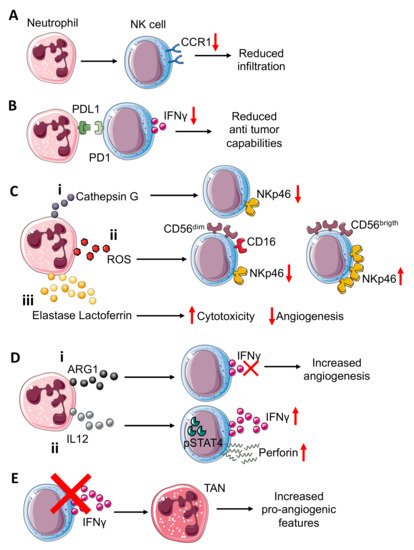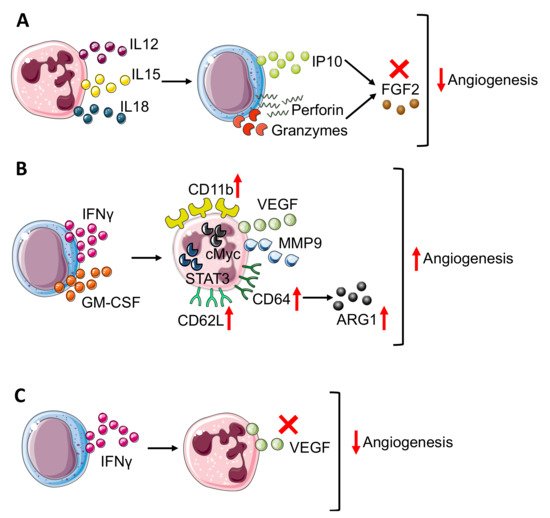Neutrophils are the most abundant circulating leukocytes, accounting for 50–70% of blood cells. Natural killer (NK) cells are large granular lymphocytes from innate immunity, participating in virus-infected and malignant-transformed cells recognition and elimination.
1. A Dangerous Liaison in the Immunosuppressive TME
Several studies have demonstrated that TANs can directly or indirectly (via crosstalk with other immune cells) contribute to the generation of an immunosuppressive TME. Studies of neutrophil-induced immunosuppression have mostly focused on their ability to inhibit T cell functions
[1][2]. Here, we focused on neutrophil-NK cell interactions as a critical step in the immunosuppressive TME.
In a colorectal cancer murine model, generated by CT-26 cells intramuscularly injected into the flanks of BALB/c mice, neutrophils have been shown to suppress the NK cell infiltration, by downregulating CCR1 and to impair anti-tumor capabilities (
Figure 1A) by cell-to-cell interactions, through the PD-L1/PD-1 axis
[3] (
Figure 1B).


